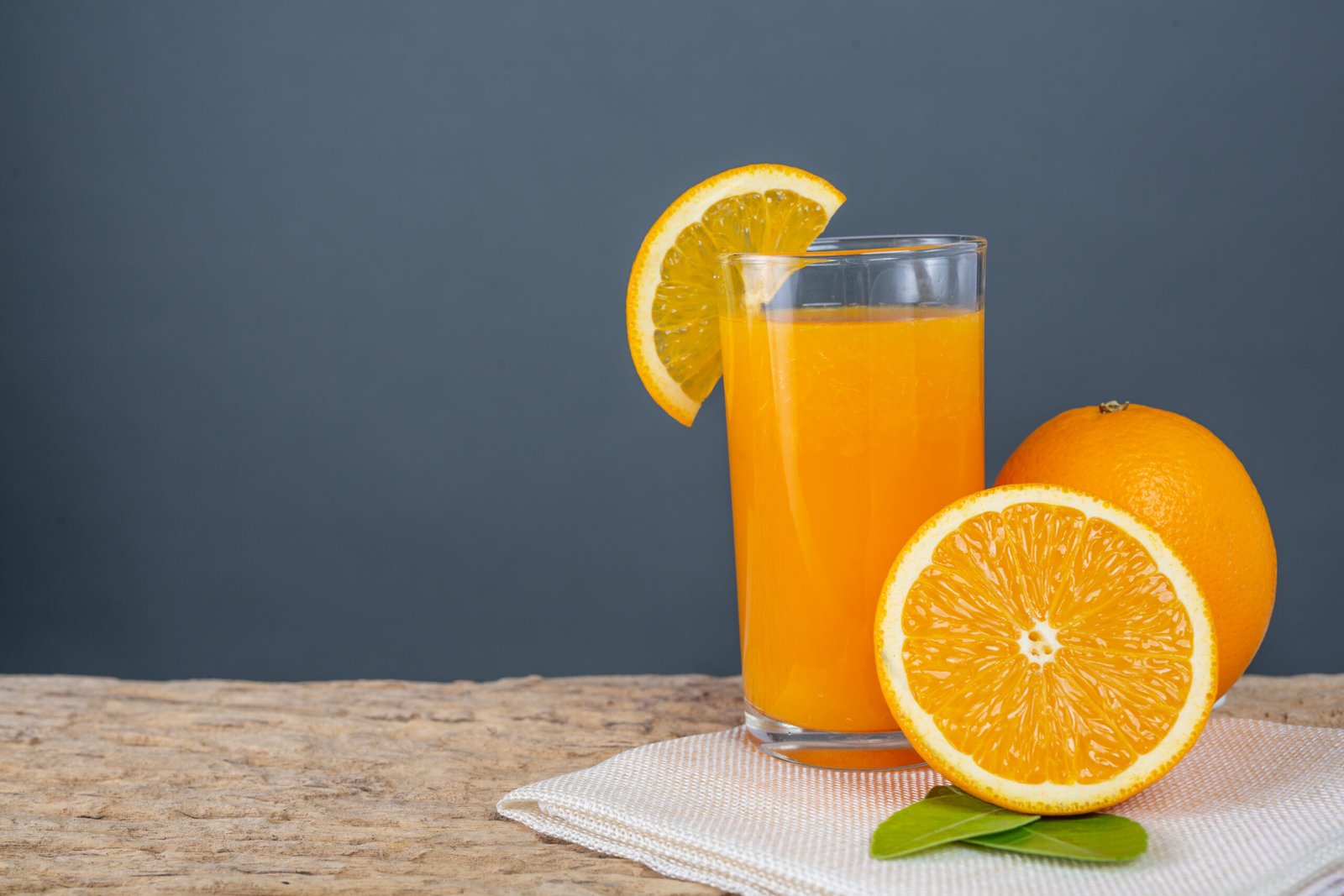How is Orange Juice Made-From Fresh Oranges to a Refreshing Drink
Orange Juice is the liquid removed from the orange, available in change like blood orange, navel, Valencia, tangerine, and orange tree.
What does ‘from concentrate’ mean?
At the manufacturing stage, when juice from the orange has been extracted and the pulp removed, the product is processed into two forms: not-from-concentrate (NFC) or bulk frozen concentrated orange juice (FCOJ). ‘From concentrate’ means that all too much water from the oranges is removed, yielding a product seven times more concentrated than the first juice. Compressing and then freezing the orange juice allows for more orderly packaging and transportation. Water is then joined in again before it is sold.
What does ‘Not From Concentrate’ mean?

For orange juice to be thought about and labeled “not from concentrate”, it must be treated without any water moving and reconstitution. Juice not made from the center will likely be pasteurized, and it is also doable for the juice producer will take out orange oil from the peel and add it to the juice to make the juice more acceptable.
How orange juice is made
To put it simply, making orange juice needs the following steps: cleaning and sorting, juice removal, filtration, chaptalization, degassing, sterilization, homogenization, filling, and cooling. After all these processes, orange juice comes into visible as box fruit drinks on the shelf.
Cleaning and sorting
To keep pollution away from juice, we need to wash the fruit materials closely in the first place. For professional juice manufacturers, fruit cleaners are indispensable. There are brunch and spray fruit tumbling to rinse the surface. You are approved to add some cleanser to the water to achieve a sterilization effect. After removing the poison and pollution from the fruit, you can pick out the incomplete fruits, withered fruits, and fruits damaged by upset and pests.
Juice extraction
Citrus fruits contain a mass of naringin and limonin in the peels, which become soluble after heating and turn the juice bitter. So we have to remove the peel before taking it out in case they get into the juice. In this regard, traditional breaking and squeezing are no longer suitable. Manufacturers usually adopt fruit peeling and extracting machines. It realizes peeling and extracting without one piece of equipment, effectively separating orange peel and pulp. This machine can increase the juice yield.
Filtration
There are usually some dangled solids in take-out juice, which not only affect the appearance and taste of juice but make it simple to go bad. Filtration is necessary to remove the coarse and suspended particles in cloudy juice and maintain its color and flavor as much as possible. In terms of clear juices, they need to be refined to remove the colloidal and haste particles.
Chaptalization
Some crude juice doesn’t taste good. Usually, it needs adding extra to adjust the sugar and acid part. However, too many additives can dilute the original flavors of orange. It is well allowed that the sugar content should be 13 to 15 times of acid.
Degassing and Degreasing
During the orange juice method, the gas held in fruit cells gets into the juice or attached to the particles. At the same time, the juice is inevitably exposed to the air. The oxygen carried in orange juice is destructive to vitamin C and causes the flavor and color to go bad. For these reasons, degassing must be carried out before heating and sterilization. Degreasing is carried out along with degassing. Certain amounts of citrus peel oil assist the orange juice taste, but immoderate oil can produce a peculiar smell. Control the quantity is peel oil is needed.
Pasteurization
Pasteurization can not only remove the spoilage bacteria but also disable the enzymes that can cause chemical changes. Heating is the most prevalent way to kill bacteria, but it risks sacrificing the quality of citrus juice. Pasteurization means keeping the heat between 91℃ and 95℃ for 15 to 30 seconds, or more than 120℃ for 3 to 10 seconds, which can achieve a sterilization effect without destroying the quality.
Homogenization
This is a special process for making cloudy juice, usually for products box in bottles. During this process, the particles contained in the juice are further crushed into little ones, where jell oozes out and disperses into the orange juice homogeneously. By these means, we get cloudy juice whose put-up solids will never precipitate.
Filling and Cooling
After pasteurization, the orange juice is transmitted to a charging barrel and filled into cans bottles directly. To reduce the flavor loss, the juice is taken to be kept in the barrel within 2 minutes. We can clean the can and cover it with hot juice by putting it upside down right after filling. Then, spray cold water to reduce the temperature to under 38℃. Don’t make it completely cool, certain prompt heat can help keep the can dry in case it gets rusty.
Conclusion
The action of making orange juice requires a series of steps to extract, filter, and protect the juice while maintaining its flavor and nutritional condition. The juice can be “from concentrate” where water is removed and added back later, or “not from concentrate” where it is minimally action. Additional steps such as degassing, pasteurization, and homogenization ensure the juice is safe to drink and has a consistent taste and aspect.
FAQs
[sp_easyaccordion id=”2360″]


